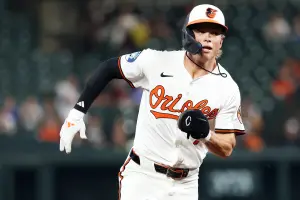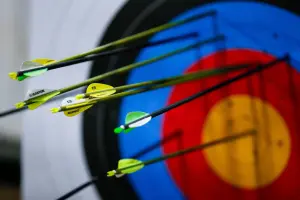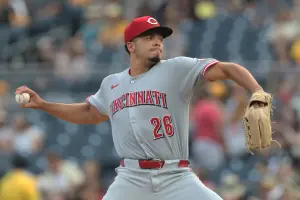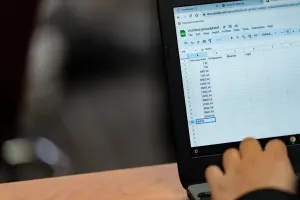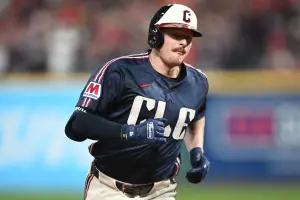
(*) ROTISSERIE: Speculative second-half saves leaders
(This article appeared in the July 10th edition of Sports Weekly)
Given the volatility of closers in modern baseball, succeeding at fantasy baseball almost requires finding saves sources during the season. Here, we will review a number of pitchers who might lead their respective teams in saves during the second half of the season. None are the bona fide closer as of now, but all have at least some chance of taking over the role and succeeding with the ball in their hands for the final three (and sometimes more) outs.
American League
On the surface, Nick Wittgren (RHP, CLE) looks like a long shot. Current closer Brad Hand is signed through 2020 at a very reasonable price for an elite closer (just over $7 million). The Indians are in second place, only 5½ games out, so it’s not clear that they’d even be sellers. Having said all that, there are multiple sources that expect Hand to be dealt before the deadline. Assuming Hand is traded, Wittgren is the obvious replacement. He definitely has closer skills, with a 27% strikeout rate (K%) and a 7.0 strikeouts per walk (K/BB). He’s seen some higher-leverage situations, so the team has confidence in him in a late-inning role. Given the circumstances, the rest of your league may be overlooking Wittgren, but he’s a solid choice to emerge as a closer in late July.
Joe Jiménez (RHP, DET) is more of a long shot than most of the players on this list. He has closer skills, with a 34 K% and 3.2 K/BB. His current ERA is ugly, but it’s about a run higher than his expected fielding independent pitching (xFIP) mark. Current closer Shane Greene is pitching well, but he’s due for a big raise in arbitration (potentially $8-$10 million salary) and could be an enticing trade chip at the deadline. There’s really no trade buzz and no need to deal Greene, as the team is only on the hook for $62 million going into 2020, but it’s the kind of deal rebuilding teams frequently make.
Like Jimenez above, Ty Buttrey (RHP, LAA) is also behind a closer (Hansel Robles) who’s pitching well. The Angels had a committee to start the season before settling on Robles, so if he struggles, they might be quick to make a change. Robles is also due for a raise in arbitration, and the Angels already have $115 million in salary commitments, so he could be dealt at the deadline. Buttrey has other advantages, as well—he’s pitched in higher leverage overall than Robles, and his LH/RH split is much closer than is Robles’s. Based on pure ability alone, Buttrey is the better option, so there’s more than one scenario that lands him the job.
Nate Eovaldi (RHP, BOS) has missed all but a couple of weeks this year due to elbow surgery, but he’s expected to return shortly after the All-Star break. The team has already announced that he’ll be used as a reliever, and probably as the closer. The Boston bullpen has been a disaster this year, and the team is hoping Eovaldi can help stabilize it. The risk here isn’t whether he’ll get the opportunity—it’s that he’s never been a full-time reliever, with only 14 career innings in that role. And despite throwing hard, he doesn’t have the traditional high-K closer profile. Still, he has the opportunity and the overall skills to succeed.
National League
Scott Oberg (RHP, COL) makes an intriguing target. Current closer Wade Davis has been terrible, with a 5.54 ERA on the season, and a 9.53 ERA over the last month. His 13% BB% is particularly concerning. Meanwhile, Oberg has a 1.24 ERA (though a 3.56 xFIP) and has been strong against hitters from both sides of the plate. It will only take one or two more blowups before Davis is replaced.
Nick Anderson (RHP, MIA) is in an interesting position. He’s clearly the first (and maybe the only) choice to replace current closer Sergio Romo if he’s traded, but it’s questionable whether teams will be interested in Romo and his 4.13 ERA. While Anderson’s 4.33 ERA isn’t much better, he has a 36% K%, 4.1 K/BB, and 2.98 xFIP. He’s ready to take over if the Marlins can find someone who wants Romo.
It’s quite likely that the top half the San Francisco Giants’ bullpen (Will Smith and Sam Dyson) will be gone by the trade deadline. That leaves some mix of Mark Melancon (RHP, SF), Reyes Moronta, and Trevor Gott to close out games. While none of the three looks to be a dominant closer, there’s a good chance Melancon gets the first shot. First, he was signed in 2017 to be the closer; second, the Giants will want to showcase him to see if they can convince someone to take on his $14 million salary in 2020. While he’s nowhere near the relief stud he used to be, he’s still capable of being a decent second-tier closer.
Wander Suero (RHP, WAS) is a very long shot for 2019. The Nationals have a team-friendly 2020 option on closer Sean Doolittle, and they’re currently in a battle for the NL wild card (and still within striking distance of the Braves for the division). If they should falter, though, Suero may be in the best position to take over, despite the recent heroics of 42-year old Fernando Rodney. Suero has an ugly 5.30 ERA, but his 29% K%, 3.6 K/BB, and 3.73 xFIP all point to strong skills that could help him succeed in the role.
The time for


